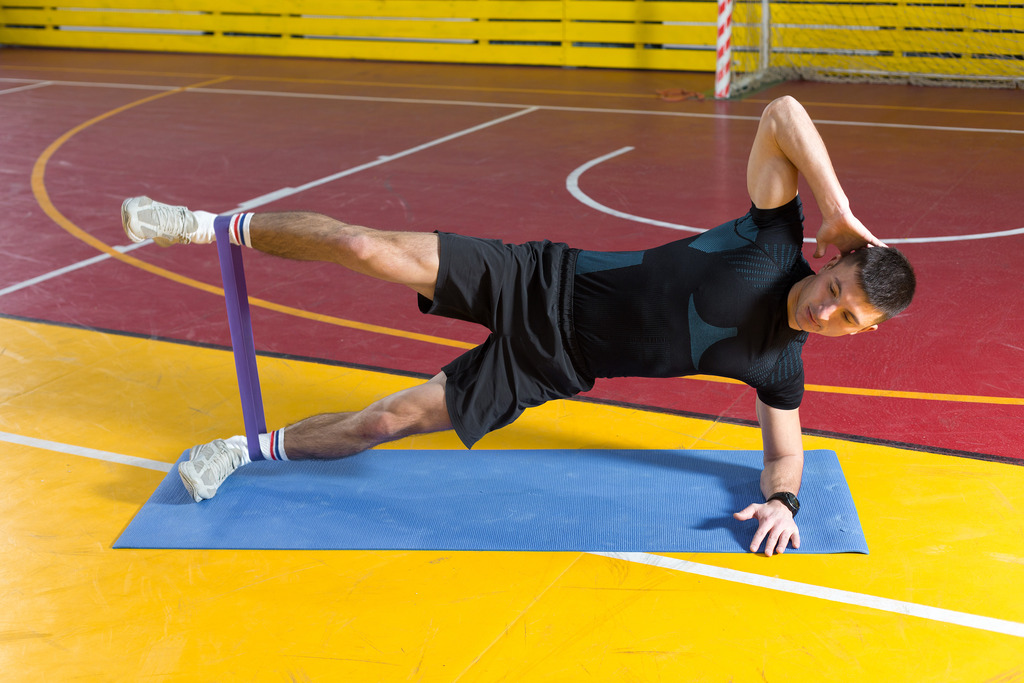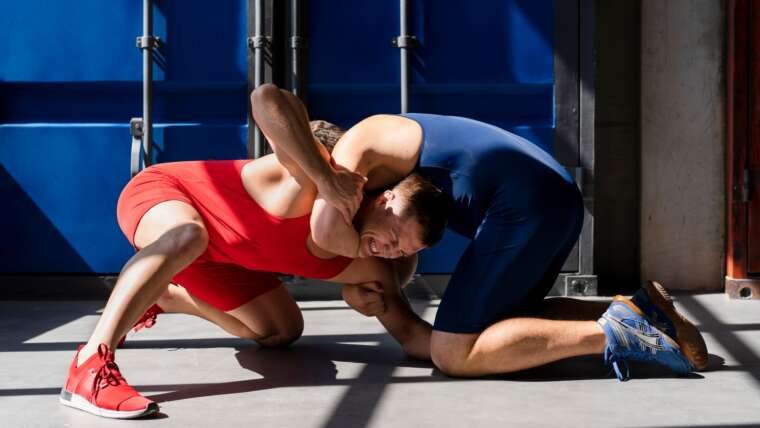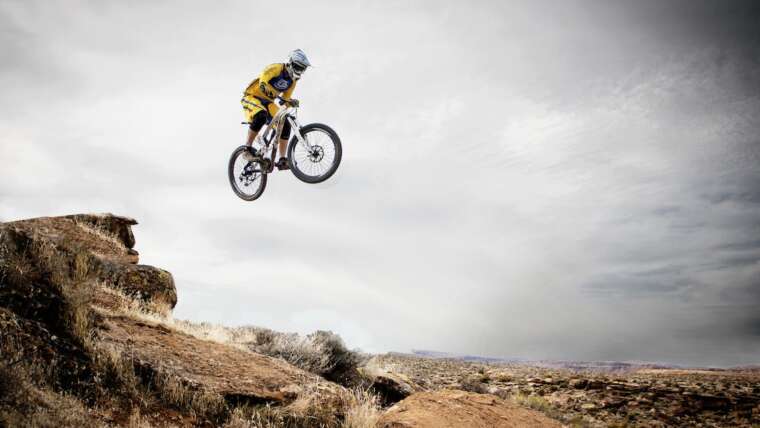Are you tired of the same old routine?
Looking for a way to spice up your training and take your running game to the next level?
That’s where resistance bands come in handy.
These simple yet effective tools can add a whole new dimension to your training, targeting key muscle groups and improving your strength, stability, and flexibility.
So, without any further delay, let’s talk about the best resistance band exercises for runners:
Resistance Band Workouts For Runners At Home
Listed below are the best resistance band exercises for peak running performance:
1. Resistance Band Lateral Walks
Lateral walks are excellent for runners as they target the hip abductors and gluteus medius muscles, which play a crucial role in stabilizing the pelvis during running.
Strengthening these muscles helps prevent knee valgus collapse (inward knee movement) and reduces the risk of injuries such as IT band syndrome and patellofemoral pain syndrome.
Step-By-Step Guide:
- Place a resistance band around both legs, just above your knees.
- Stand with your feet hip-width apart and keep a slight bend in your knees.
- Engage your core and keep your back straight.
- Take a small step to the side with one foot, then follow with the other foot, maintaining tension on the band.
- Keep stepping sideways for the desired number of repetitions, ensuring to keep constant tension on the band throughout the movement.
- To return to the starting position, perform the same number of steps in the opposite direction.
2. Resistance Band Leg Presses
It is one of the best resistance band exercises for runners that provide them with a great way to strengthen their quadriceps, hamstrings, and glutes.
Strengthening these muscle groups can improve running efficiency, power, and endurance.
Stronger leg muscles also contribute to better shock absorption and propulsion during each stride, reducing the risk of overuse injuries.
Related: Calf Stretches For Runners
Step-By-Step Guide:
- Sit on the floor with your legs extended and loop a resistance band around the balls of your feet.
- Hold the ends of the resistance band in each hand and lie back with your hands on the floor for support.
- Bend your knees and pull them towards your chest while pressing against the resistance of the band.
- Slowly extend your legs back out to the starting position, maintaining tension on the band throughout the movement.
- Repeat for the desired number of repetitions.
3. Resistance Band Glute Bridges
Glute bridges are essential resistance band workout for runners as they target the gluteus maximus, the largest muscle in the body.
Strengthening the glutes helps maintain proper hip extension and alignment, which is crucial for generating power and propulsion during running.
Strong glutes also contribute to improved stability and balance, reducing the risk of lower back pain and hip injuries.
Related: Pre Run Stretches
Step-By-Step Guide:
- Lie on your back with your knees bent and feet flat on the floor.
- Place a resistance band just above your knees.
- Engage your core and squeeze your glutes as you lift your hips towards the ceiling, pressing against the resistance of the band.
- Hold the top position briefly, then lower your hips back down to the starting position.
- Repeat for the desired number of repetitions.
4. Resistance Band Hip Abduction
Hip abduction exercises with resistance bands are beneficial for runners as they target the hip abductor muscles, including the gluteus medius and minimus.
Strengthening these muscles helps maintain proper hip alignment and stability, reducing the risk of IT band syndrome, hip impingement, and other overuse injuries commonly experienced by runners.
Step-By-Step Guide:
- Attach one end of a resistance band to a stable object at ankle height.
- Loop the other end of the band around your ankle.
- Stand perpendicular to the anchor point with your feet hip-width apart.
- Keeping your leg straight, lift it sideways away from your body against the resistance of the band.
- Hold the top position briefly, then return to the starting position in a controlled manner.
- Repeat for the desired number of repetitions before switching sides.
5. Resistance Band Hamstring Curls
Hamstring curls with resistance bands are among the best exercises for runners as they target the hamstring muscles, which play a significant role in decelerating the leg during the swing phase of running and absorbing shock upon foot strike.
Strengthening the hamstrings can help improve running performance, prevent hamstring strains, and reduce the risk of hamstring-related injuries.
Related: Best Stretches For Runners
Step-By-Step Guide:
- Lie face down on a mat with your legs straight and a resistance band looped around both ankles.
- Anchor the other end of the resistance band to a stable object or have a partner hold it.
- Engage your core and bend your knees to bring your heels towards your glutes, pressing against the resistance of the band.
- Hold the top position briefly, then slowly extend your legs back out to the starting position.
- Repeat for the desired number of repetitions.
6. Resistance Band Monster Walks
Monster walks are highly beneficial resistance band exercise for runners as they target the hip abductors, glutes, and hip external rotators, which are essential for maintaining proper hip and knee alignment during running.
By strengthening these muscles, runners can improve their stability, balance, and overall biomechanics, reducing the risk of common running injuries such as IT band syndrome, patellofemoral pain syndrome, and runner’s knee.
Related: Post Run Stretches
Step-By-Step Guide:
- Place a resistance band around both legs, just above your knees.
- Stand with your feet shoulder-width apart and keep a slight bend in your knees.
- Engage your core and keep your back straight.
- Take a step forward with one foot, then follow with the other foot, maintaining tension on the band.
- Continue stepping forward for the desired number of repetitions.
- To perform backward monster walks, take a step backward with one foot, then follow with the other foot, maintaining tension on the band.
- Continue stepping backward for the desired number of repetitions.
Over To You
Here’s your comprehensive guide to resistance band exercises for runners.
We hope you’ve found these exercises helpful and are excited to incorporate them into your training routine.
So, what are you waiting for?
Grab those bands, hit the trails, and let’s crush those running goals together.




